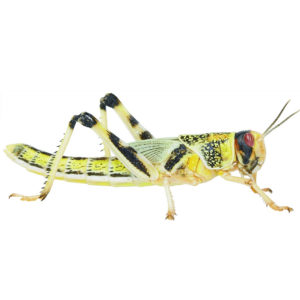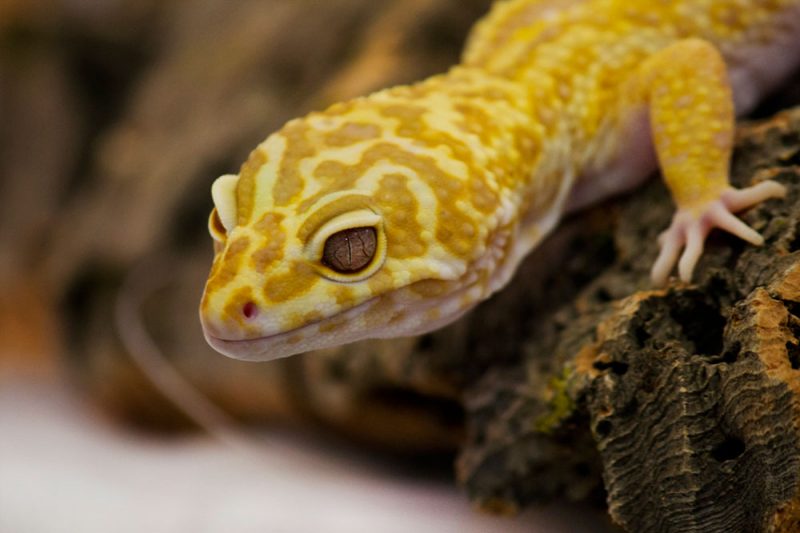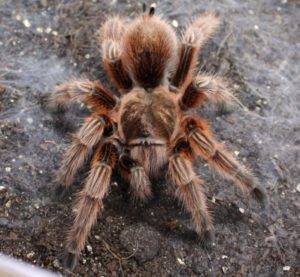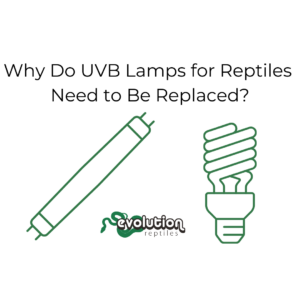
Live food Loyalty Program — Only at Our Kidlington Store!
Calling all reptile keepers and bug lovers! Stock up and earn rewards every time you purchase live foods in-store. 🦗 Get 50 Bonus Points When

Substrates can be, for a new reptile keeper, something of a minefield of a subject. If there’s one thing that can ignite abusive screaming matches on certain corners of the internet, it’s the question of what to put on the floor of your reptile pet’s enclosure!
We don’t recommend the various forms of ‘cage carpet’ at all. Our judgement has been called into question more than once about this, but – as with everything we do – we do have our reasons; it’s not just all about the aesthetics. So why don’t we recommend it? After all, there are other items that we encourage people to use, even if we don’t routinely use them in store, so what’s different with this particular type of product?
Read on….
Hygiene. Seems like an odd one to start on, as one of the things often cited about cage carpet is that it’s more hygienic; and if changed daily, that may be true. But who wants to be changing their pets’ bedding every single day? One of the prime reasons for getting a reptile is that they can be simpler to care for than more traditional mammalian pets, and stripping the house down every day for a clean is somewhat counter productive. The other issue is that when your reptile defecates, any liquid portion runs through the carpet to the wooden or glass floor underneath; this produces ideal conditions for the formation of what is known as ‘biofilm’, a thin layer of bacteria and other microorganisms that can require specialist cleaning solutions to completely shift. If you’ve ever washed out a dog or cat water bowl and felt that slimy feeling under your fingers, that’s biofilm.
Biofilms are very, very hard to get rid of completely without specialist cleaning solutions that dissolve or otherwise destroy them. A wipe down with a clean cloth may feel as though it has removed it, but it hasn’t! As soon as the carpet is replaced, the microorganisms within the film begin to reproduce and spread once more. Any dampness, whether from the reptile’s bodily functions or a spilled water bowl, will accelerate this process. Some of those organisms are very bad – salmonella, staphylococcus, and listeria for instance – so having a reservoir for bacteria and fungi inside the vivarium is the exact opposite of what we are aiming for.
If the carpet is not thoroughly cleaned very regularly, smell can be a real issue. Cleaning the carpet itself isn’t always easy, as looser or wetter fecal matter (from a well fed bearded dragon, for instance) can get right into the fibres, dry out on top and prove very hard to remove. Any dried organic matter within the artificial fibres only provides more food for those opportunistic bacteria, which accelerates their growth.
Maintenance. Carpets can be very hard to clean. The type of materials that are used in cage carpets are tightly woven artificial fibres, which absorb dirt and moisture into the gaps between them. If the carpet was discarded each time (ignoring the fact that they are not going to decompose, and will only contribute to plastic waste in the environment) then yes, that can be regarded as easy maintenance. If not discarded, then they need to be cleaned – and that’s not always easy!
Ideally, they need to be washed with biological washing powder or liquid in order to remove all solids then rinsed before being allowed to dry. However, in order for the material between the fibres to be dissolved then the larger amounts of organic matter have to be removed, which means a good prewash with soap and water and a soft scrubbing brush. Possible, but neither easy nor convenient.
Not to mention the fact that soiled cage carpet should not be washed in the same machine as your own clothes, due to the possibility of pathogen transference.
Physical damage. Even with clean, regularly sanitised carpet there can be issues. A lizard’s claws are designed to help with climbing and digging, and without the constant abrasion of a natural substrate claws in particular can grow longer and sharper than is natural. These can be prone to snagging in the fibres of the carpet, especially once the carpet becomes slightly worn, softer, with more loose fibres. These snags can be very stressful for the lizard, with the possibility of a panicked gecko or dragon pulling their claws out by the root as they bolt away from the perceived threat. This is not only painful and frightening, but then leaves an open wound as a possible entry point for infection.
Teeth can get caught in them as well. When a lizard lunges to catch an insect, it’s not unusual for them to grab a bit of whatever the bug is standing on; with a soil based substrate, this means a few grains of dirt in the mouth which, if swallowed, pass easily through the digestive system of a healthy lizard. Cage carpet is a very strong material, and the tooth is likely to break before the carpet fibres do. Broken teeth are not only extremely painful but are a classic site for infections in the mouth and gums, which can (if untreated) spread throughout the body and prove fatal. Even if an infection doesn’t spread, you have a lizard with a sore mouth who now associates hunting bugs with pain!
Environmental enrichment. Not something that would even have been dreamed of not so very long ago, it’s now being realised that lizards (even snakes!) benefit from environmental enrichment in the same way that mammals and birds do. Being allowed to express natural behaviours reduces stress levels and extends the life of your pet, which is true of all species. Living in an empty box, no matter how good the heat, humidity and UV gradients are, is neither natural nor kind to any lizard. Providing branches as basking platforms, different shapes and textures and creating blocked lines of sight so that the animal cannot see its entire enclosure at a single glance are all excellent ways to enrich any enclosure design. The other is substrate.
If correct husbandry is applied (heat, light, UV, supplementation) then the benefit to be found from substrate far outweighs the minimal risks from picking up stray bits of that substrate. A healthy lizard is going to dig; leopard geckos like to hollow out hiding places under decor, and bearded dragons appear to delight in moving as much substrate as they can from one end of the enclosure to the other. Tortoises like to burrow, skinks too; it provides a whole extra layer of stimulation for an animal whose brain evolved to spend its time evading predators and looking for food. Smells, texture, variations in humidity, even the sounds it makes when the animal interacts with it all have their place in enriching the captive environment.
So must loose substrate always be used? In a word, no. If you have a hatchling that needs a little extra care, a sick animal, a new animal that needs parasite treatment or a rescue who needs to be brought back to optimum health there are alternatives. Sometimes it can be good to provide a range of surface textures, such as soil in one end and slate at the other, especially with messy eaters. Commonly used alternatives to loose substrate are:
Tile. Ceramic tiles are often recommended for lizards. They are easier to keep clean and free from the damp fecal matter that supports the growth of biofilm, but give no allowance for digging behaviour. Can be useful if used in conjunction with substrate, to provide a basking or feeding area.
Slate. Effectively the same as tile, although usually with a varied texture. Can get very, very hot directly under a basking light, so should be used with extreme caution.
Newspaper. Proper old school! Newspaper has its uses, although it should be remembered that the inks used can be toxic to animals, and if used it must be replaced at least daily. When used correctly it’s inexpensive and hygienic, absorbs water spills and damp fecal matter. If eaten can be dangerous.
Cardboard. Packaging material or old cardboard boxes can make a very effective temporary substrate. They are easy to cut to size, absorb moisture, can be replaced quickly and even provide a level of environmental enrichment – they can be ripped by claws, but are sturdy enough to stay in place, unlike newspaper.
Kitchen roll. Non toxic, absorbent and soft. Very useful for sick animals and premature hatchlings, can be used wetted in a moist hide in order to provide a clean humidity source. When shredded can be used for hiding places, or just as a fun place to rummage around in! Bear in mind that – as with newspaper – if an animal is eating substrate because it’s mineral deficient then it will try to eat paper based substrates as well. These are incredibly dangerous when deliberately swallowed; if the paper doesn’t rip then the lizard keeps swallowing until the piece is all gone, which then turns into a form of papier mache in the gut!
All of these have their place in the husbandry of our pet reptiles. But in our opinion, cage carpet is one of those items – along with hot rocks and red bulbs – that should be consigned firmly to the past.

Calling all reptile keepers and bug lovers! Stock up and earn rewards every time you purchase live foods in-store. 🦗 Get 50 Bonus Points When

Welcome to Evolution Reptiles’ guide to tarantula care! Whether you’re a seasoned arachnid enthusiast or just starting your journey into the fascinating world of these

Why Do UVB Lamps for Reptiles Need to Be Replaced and How Often UVB lamps are essential for the health and well-being of reptiles, but
Copyright 2021 Evolution Reptiles
All rights reserved.